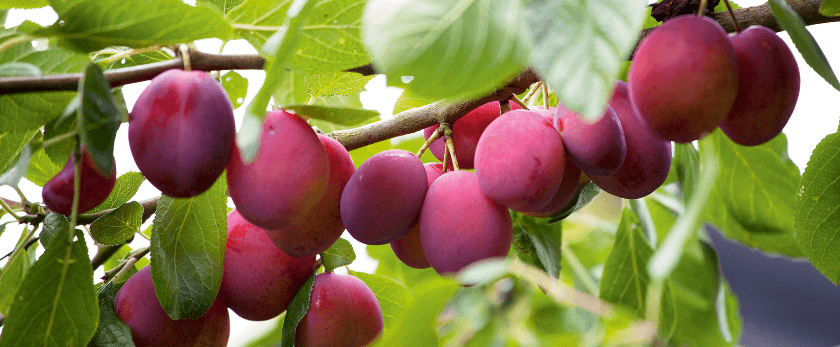Plums are a delicious and nutritious fruit that can be grown in your own backyard. Not only do they provide a tasty snack, but they also add beauty to your landscape. Growing plums is a great way to reduce your carbon footprint and promote sustainability. In this article, we will discuss the steps to successfully grow plums, the best time to grow them, and common problems that may arise.
How to Care for Plums
Watering
Plums require consistent watering to thrive. They need about 1 inch of water per week, either from rainfall or irrigation. It is important to water deeply and infrequently, rather than shallowly and frequently. This will encourage the roots to grow deeper into the soil, making the tree more resilient to drought.
Light
Plums prefer full sun, meaning at least 6 hours of direct sunlight per day. They can tolerate some shade, but too much shade can result in poor fruit production. Make sure to plant your plum tree in a spot that receives plenty of sunlight.
Soil
Plums prefer well-drained, loamy soil with a pH level between 6.0 and 7.0. If your soil is too acidic, you can add lime to raise the pH level. If it is too alkaline, you can add sulfur to lower the pH level. It is important to test your soil before planting to ensure it is suitable for growing plums.
Fertilizer
Plums require regular fertilization to promote healthy growth and fruit production. You can use a balanced fertilizer, such as a 10-10-10, in the early spring before the tree starts to bloom. Avoid fertilizing after the tree has bloomed, as this can result in excessive vegetative growth and reduce fruit production.
Pruning
Pruning is essential for maintaining the health and productivity of your plum tree. It is best to prune in the late winter or early spring while the tree is still dormant. Remove any dead, damaged, or diseased branches, as well as any branches that are crossing or rubbing against each other. This will improve air circulation and sunlight penetration, reducing the risk of disease.

Best Time to Grow Plums
The best time to grow plums depends on your location and climate. In general, plums are best planted in the late winter or early spring, while the tree is still dormant. This allows the tree to establish its roots before the growing season begins. However, if you live in a warmer climate, you can also plant plums in the fall.
Common Problems with Plums
Pests
Plums are susceptible to a variety of pests, including aphids, plum curculio, and plum moth. To prevent pest infestations, it is important to keep your tree healthy and well-maintained. You can also use organic pest control methods, such as neem oil or insecticidal soap, to protect your tree.
Diseases
Plums are also prone to diseases, such as brown rot, black knot, and bacterial spot. To prevent these diseases, make sure to plant your tree in well-drained soil and avoid overhead watering. If your tree does become infected, remove and destroy any affected branches or fruit to prevent the spread of the disease.
Lack of Pollination
Plums require cross-pollination to produce fruit. This means that you need to have at least two different plum varieties planted near each other for successful pollination. If you only have one plum tree, you can also plant a different variety of apricot, peach, or nectarine to act as a pollinator.
Conclusion
Growing plums is a rewarding experience that not only provides delicious fruit but also promotes sustainability. By following these care tips and being aware of common problems, you can successfully grow plums in your own backyard. Remember to always use responsible disposal methods for any materials used in the care of your plum tree to help create a greener, more eco-friendly future. Happy growing!










